Abstract
Mutants that adsorb certain colicins without being killed, i.e., tolerant mutants (tol), were isolated from Escherichia coli K-12 strains. Selection was done either with colicin K or E2. Several groups of mutants showing different phenotypes were found, and some of them showed tolerance to both K and E colicins, which have different receptors. Many of these mutants mapped near gal. Typical mutants from group II, III, and IV were studied in more detail. The mutant loci were contransducible with gal by phage P1. The linkage order was deduced to be tol-gal-λ. In partially diploid strains, these mutant loci are recessive to wild-type alleles. Temperature-dependent conditionally tolerant mutants were also isolated. Two groups were found: the first was tolerant to E2 and E3 at 40 C, but sensitive at 30 C; the second was tolerant to E2 at 30 C, but sensitive at 40 C. Experiments done with these mutants suggest that these mutations affect the heat lability of some protein that is necessary for the response of cells to colicins. Conditionally lethal tolerant mutants were isolated which at 40 C were tolerant to E2 and E3 and could not grow, but which at 30 C were fully sensitive and grew normally. The mutation mapped near malA. The tolerance at 40 C is not due to a consequence of an inactivation of general cellular metabolism, but presumably is a cause of the subsequent inhibition of cellular growth. The results suggest that some protein components involved in the response to colicin are also vital to normal cellular growth.
Full text
PDF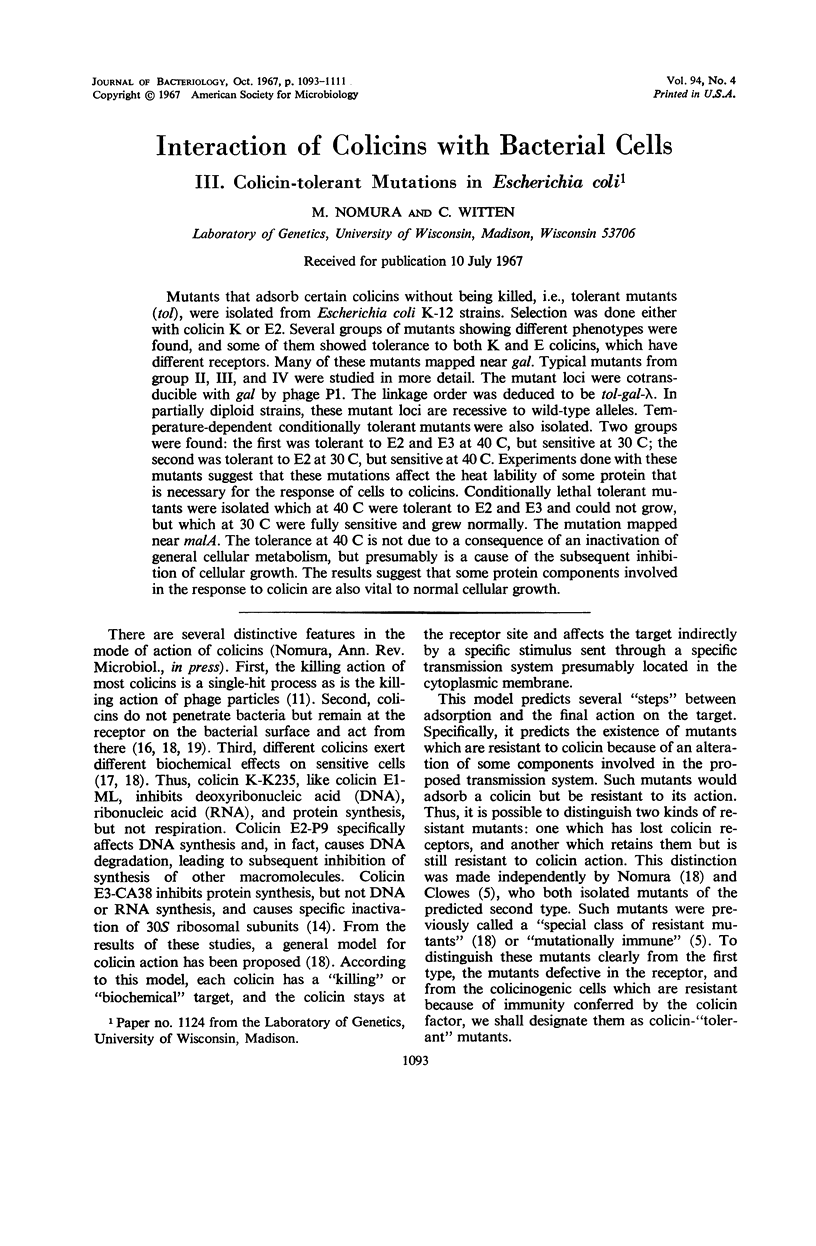
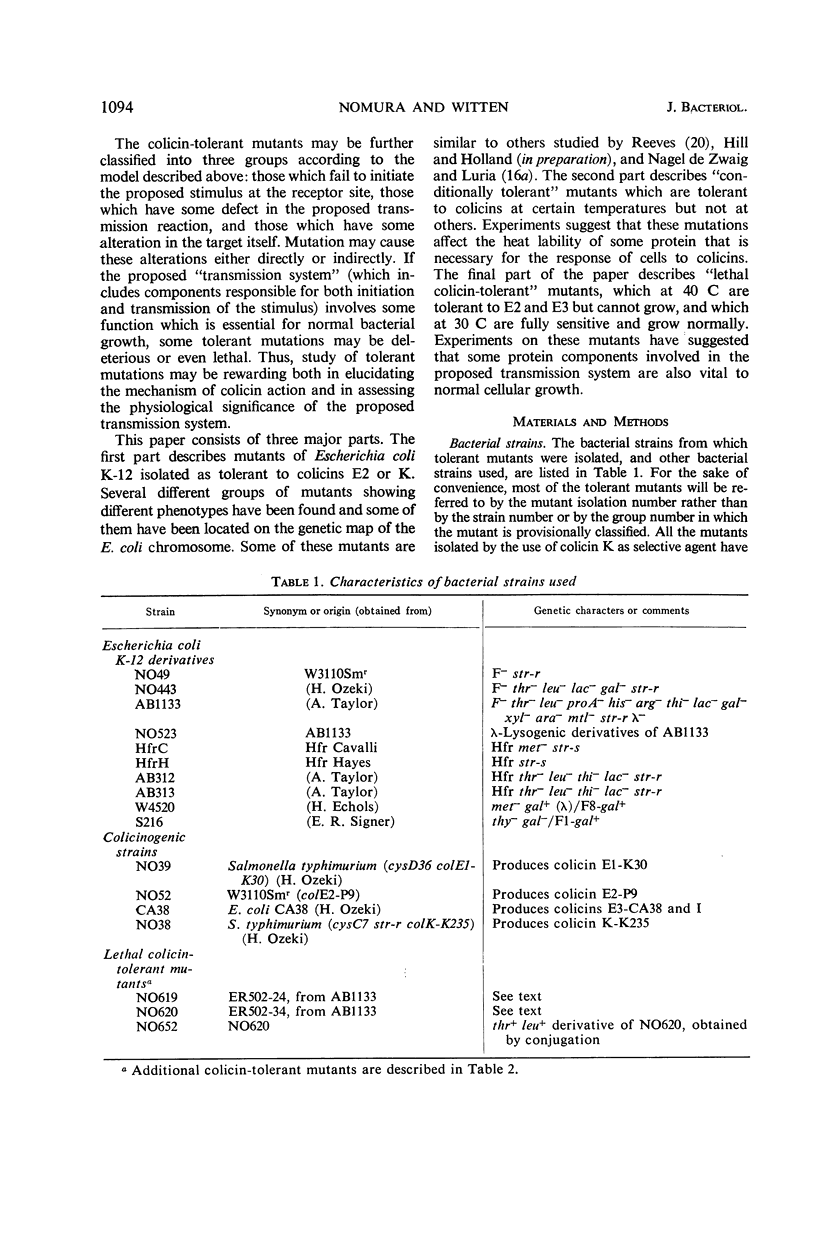
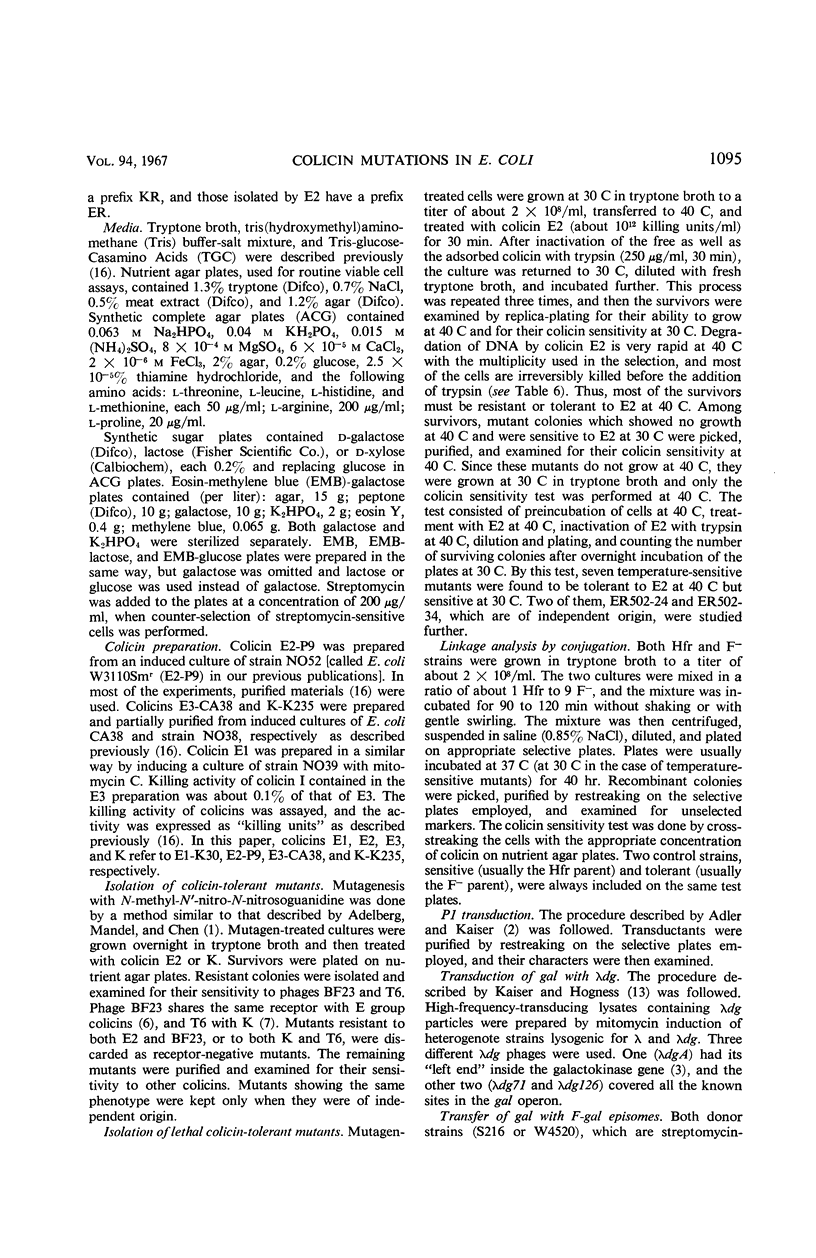
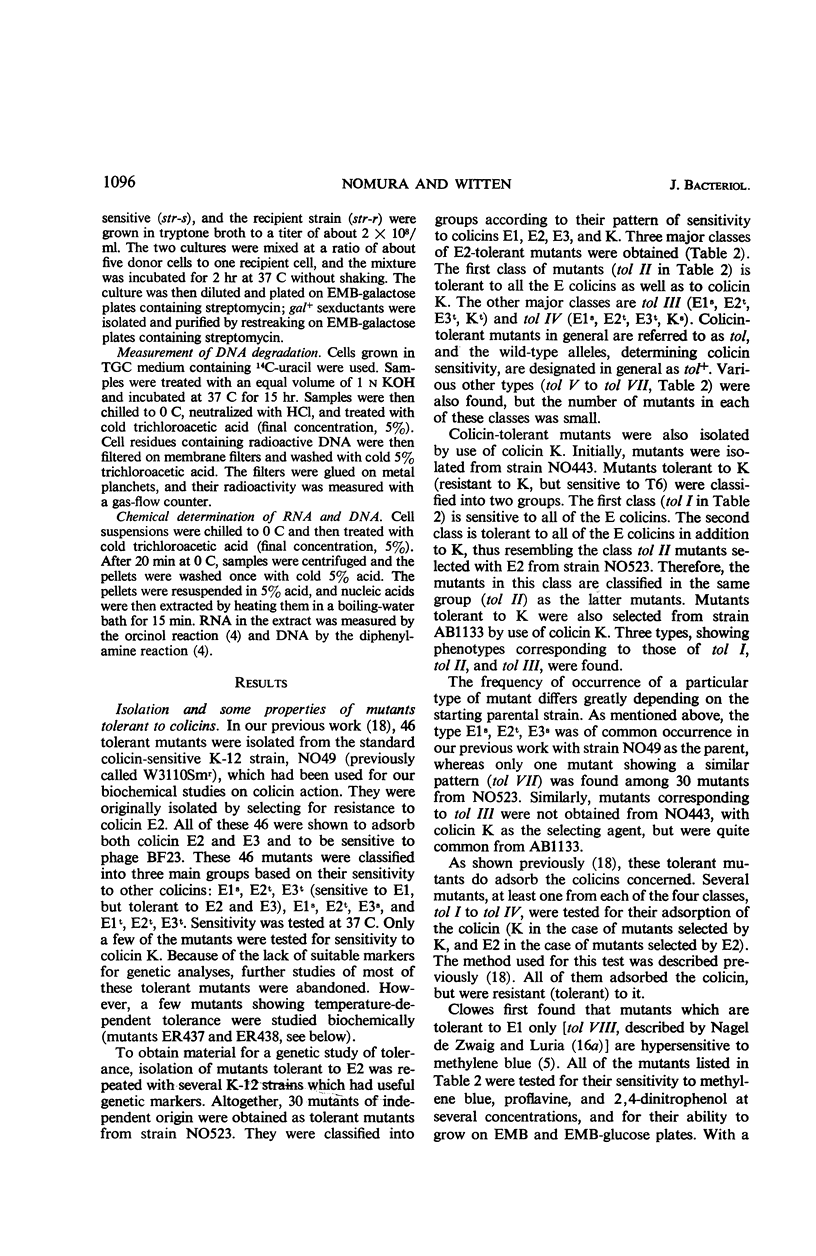
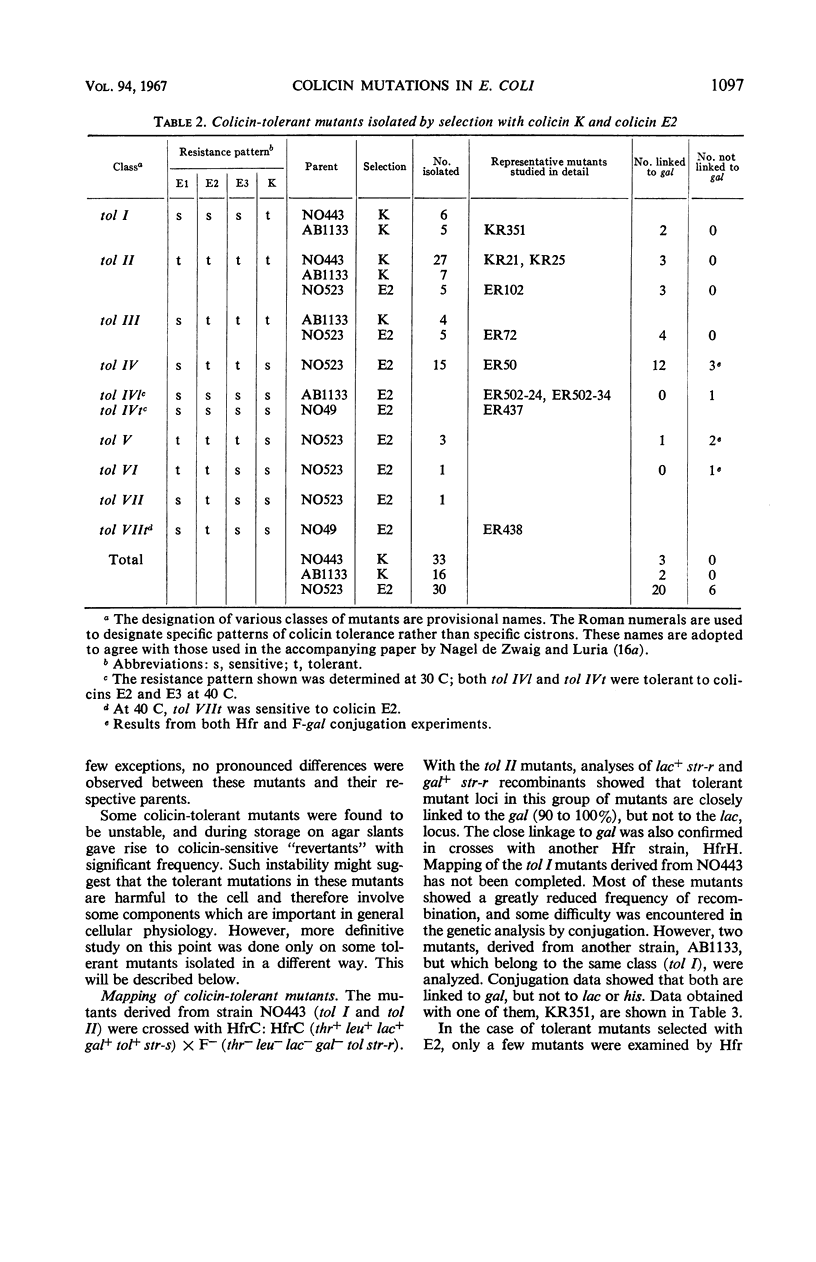
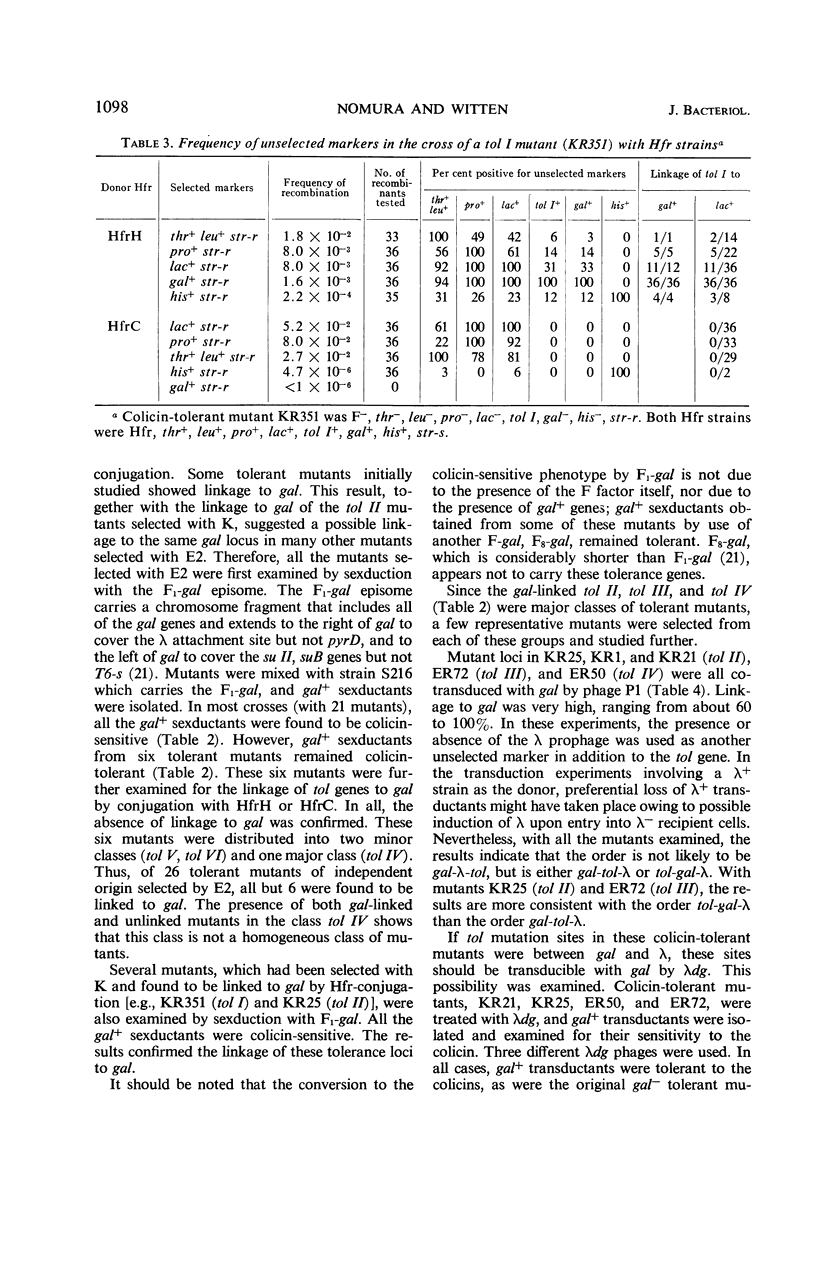
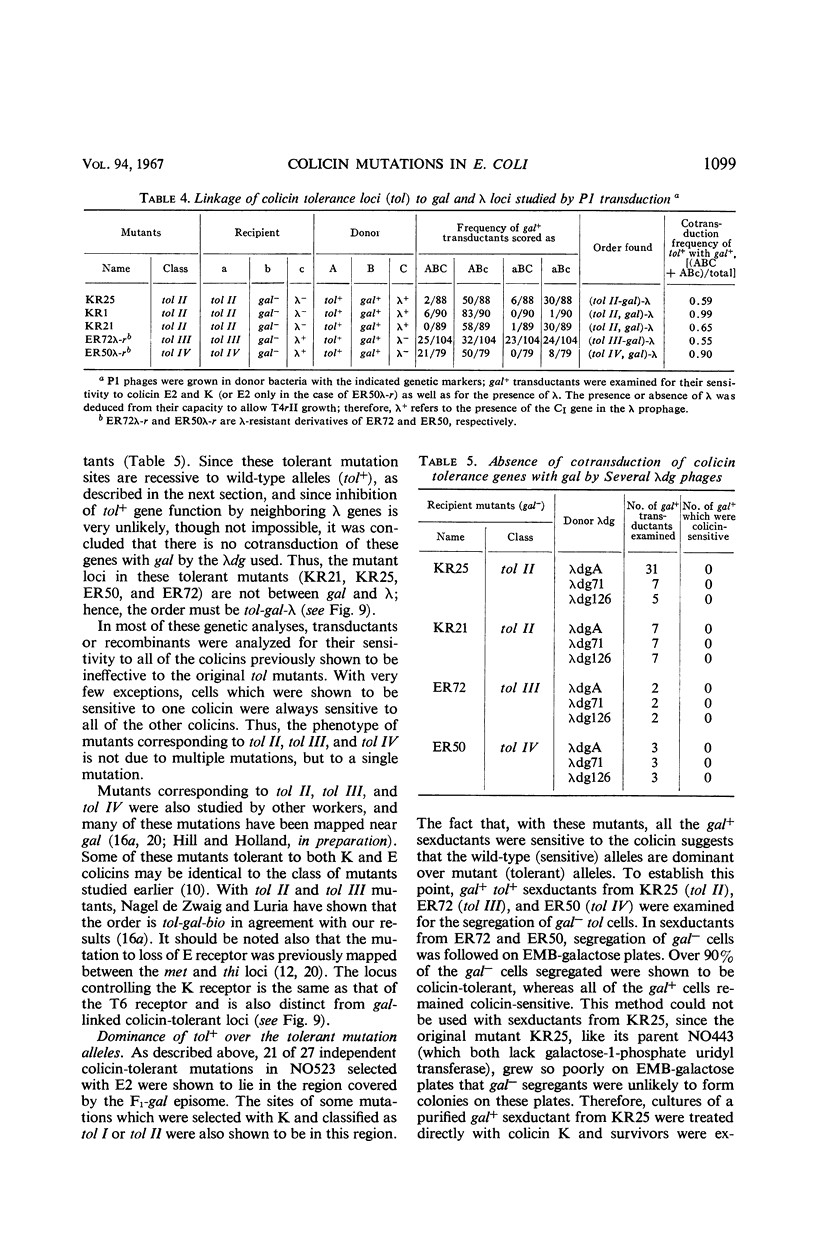
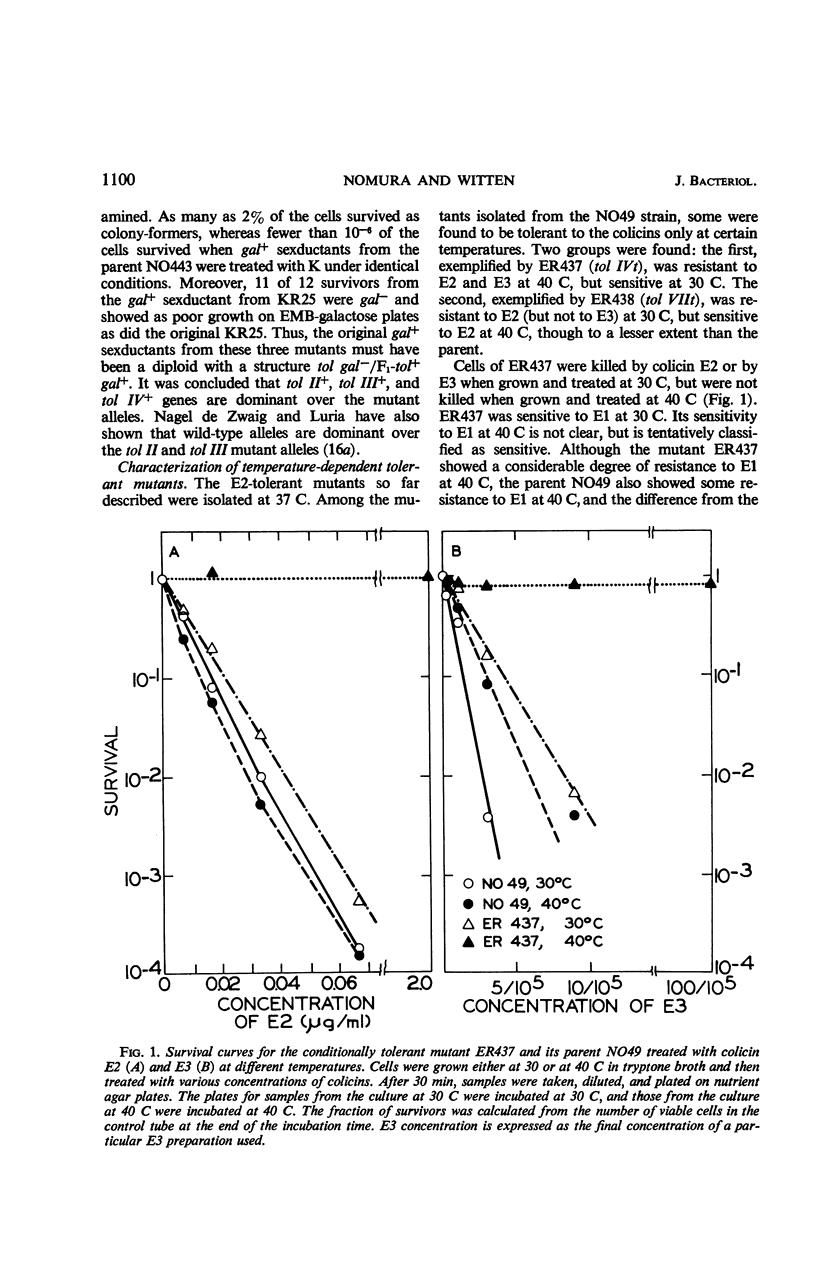
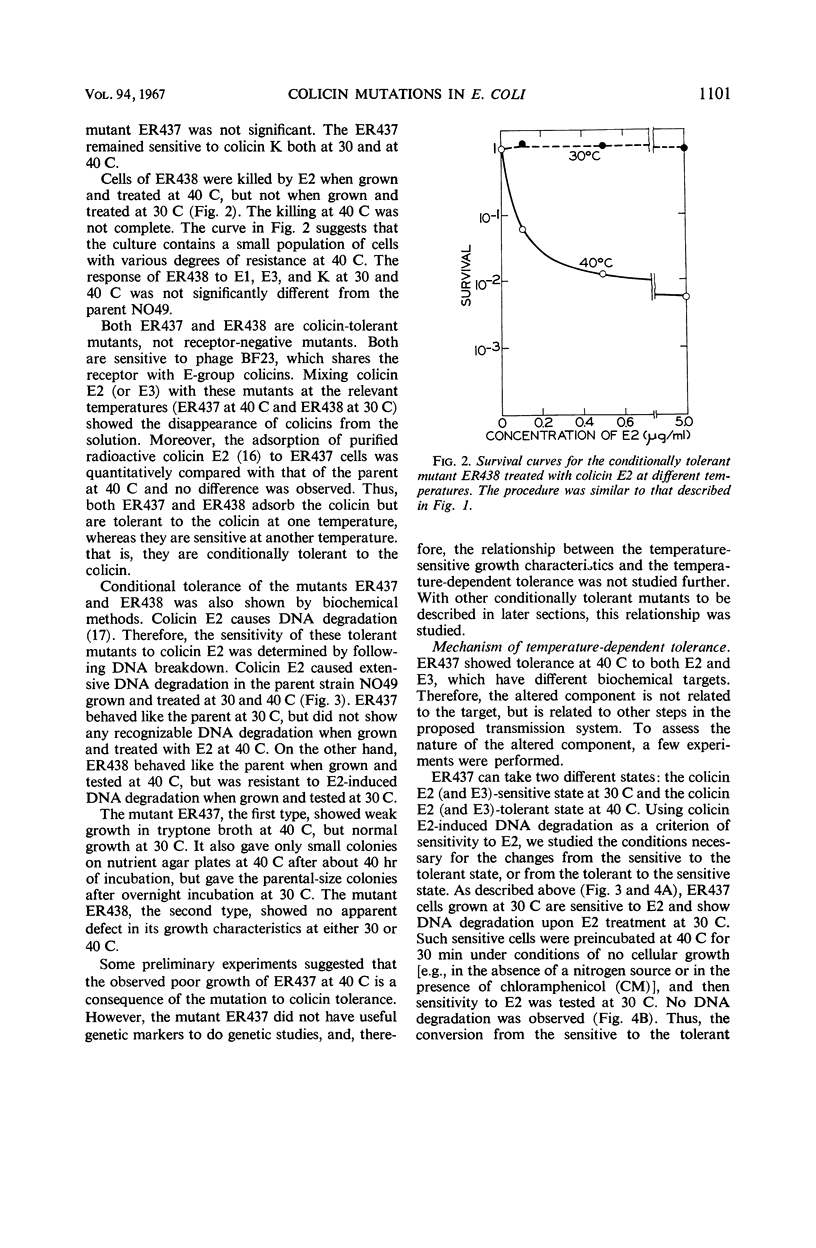
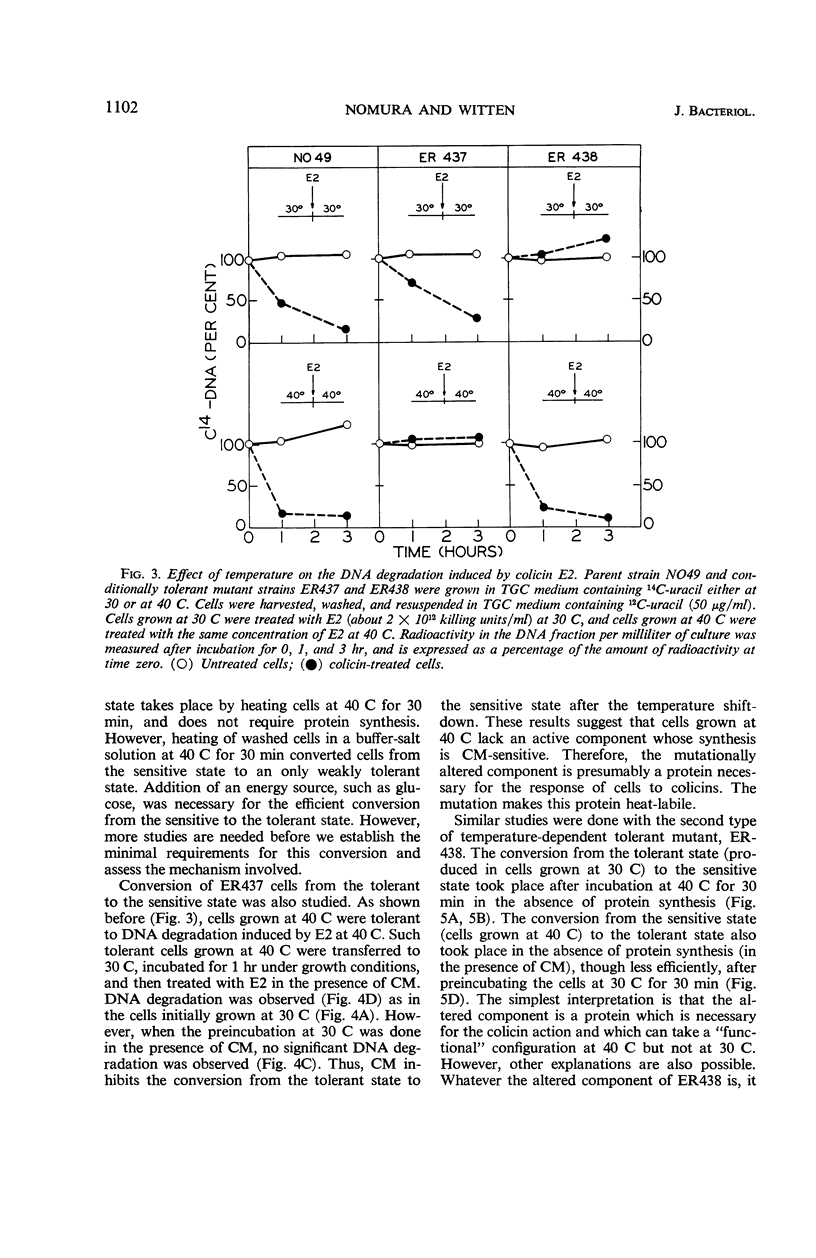
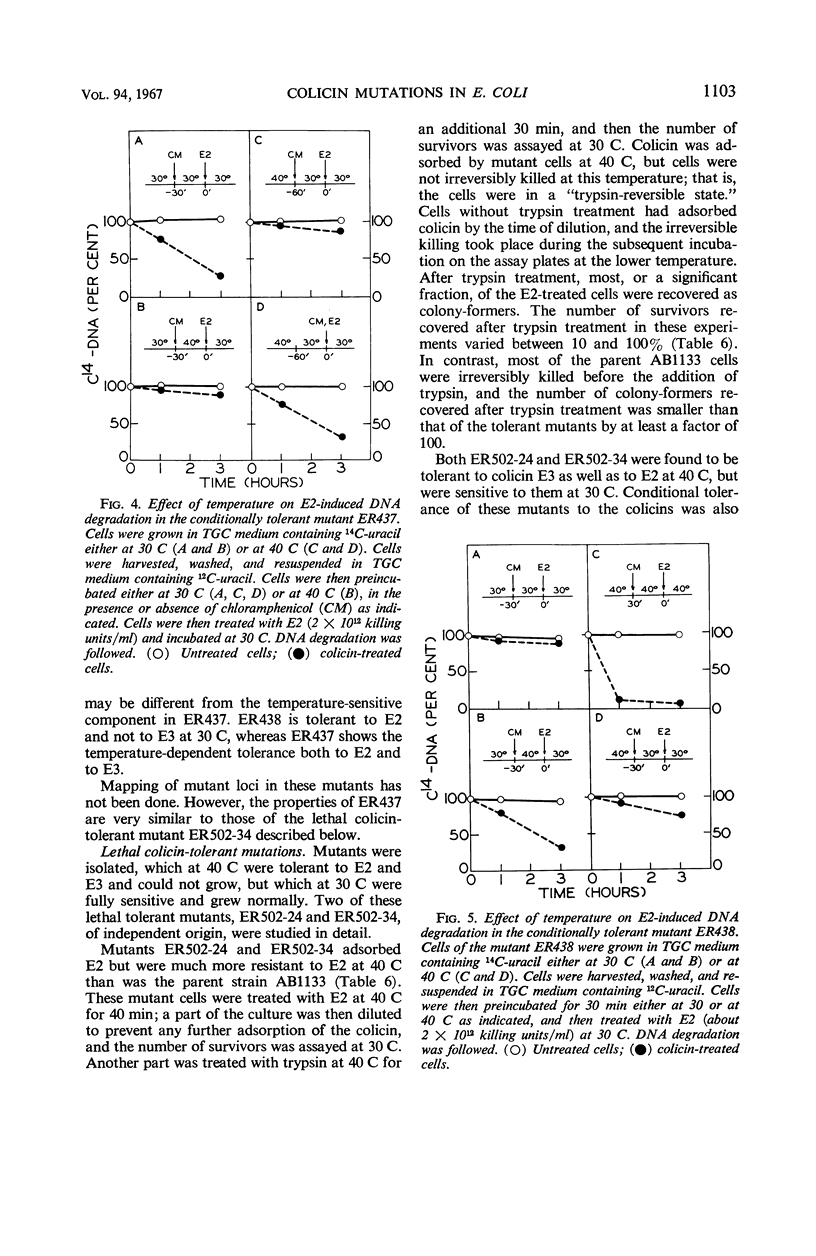

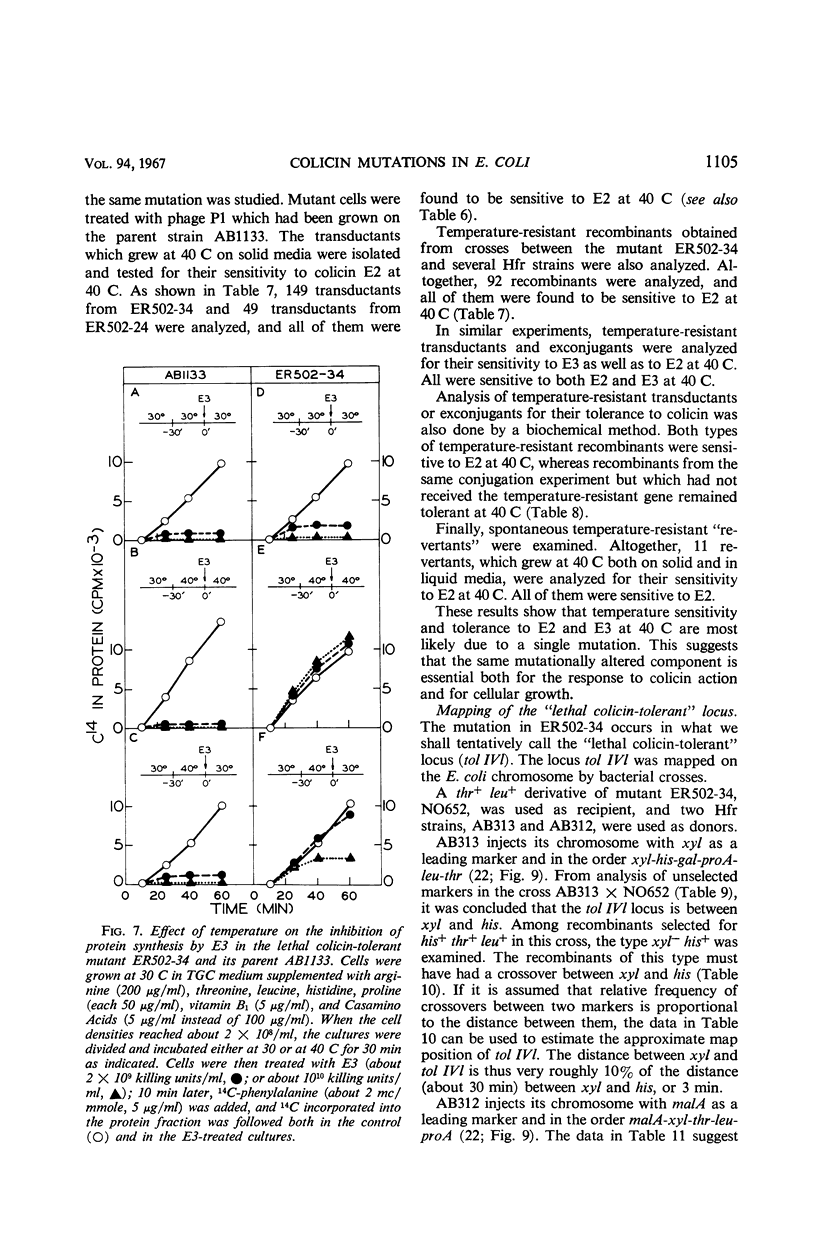
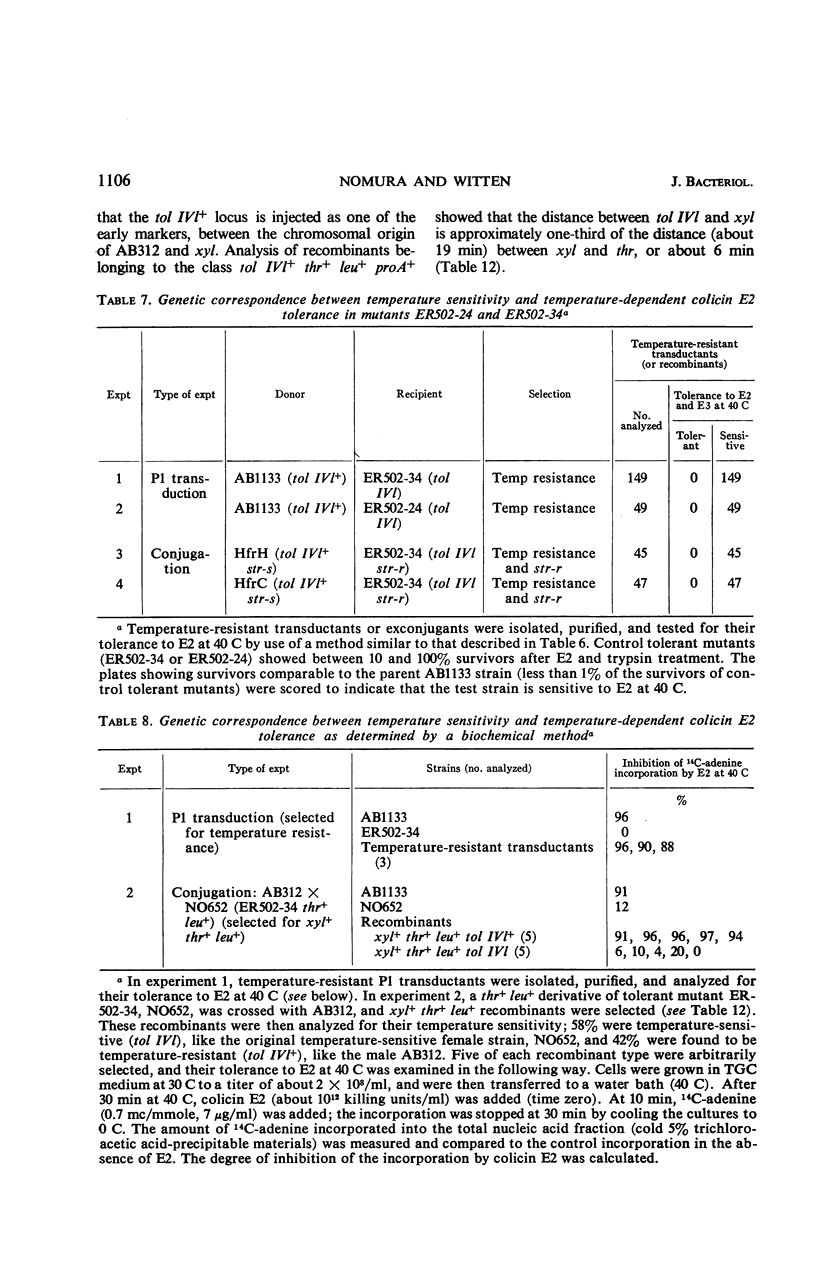
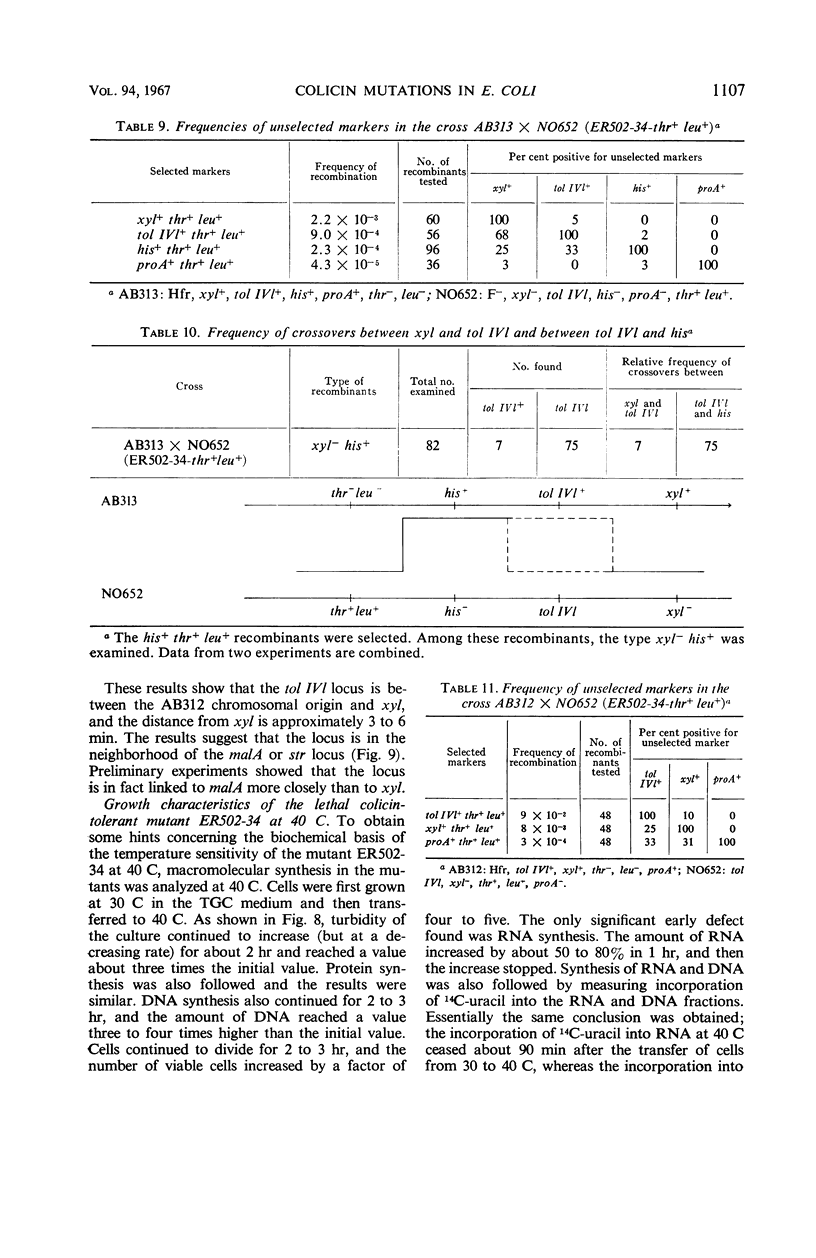
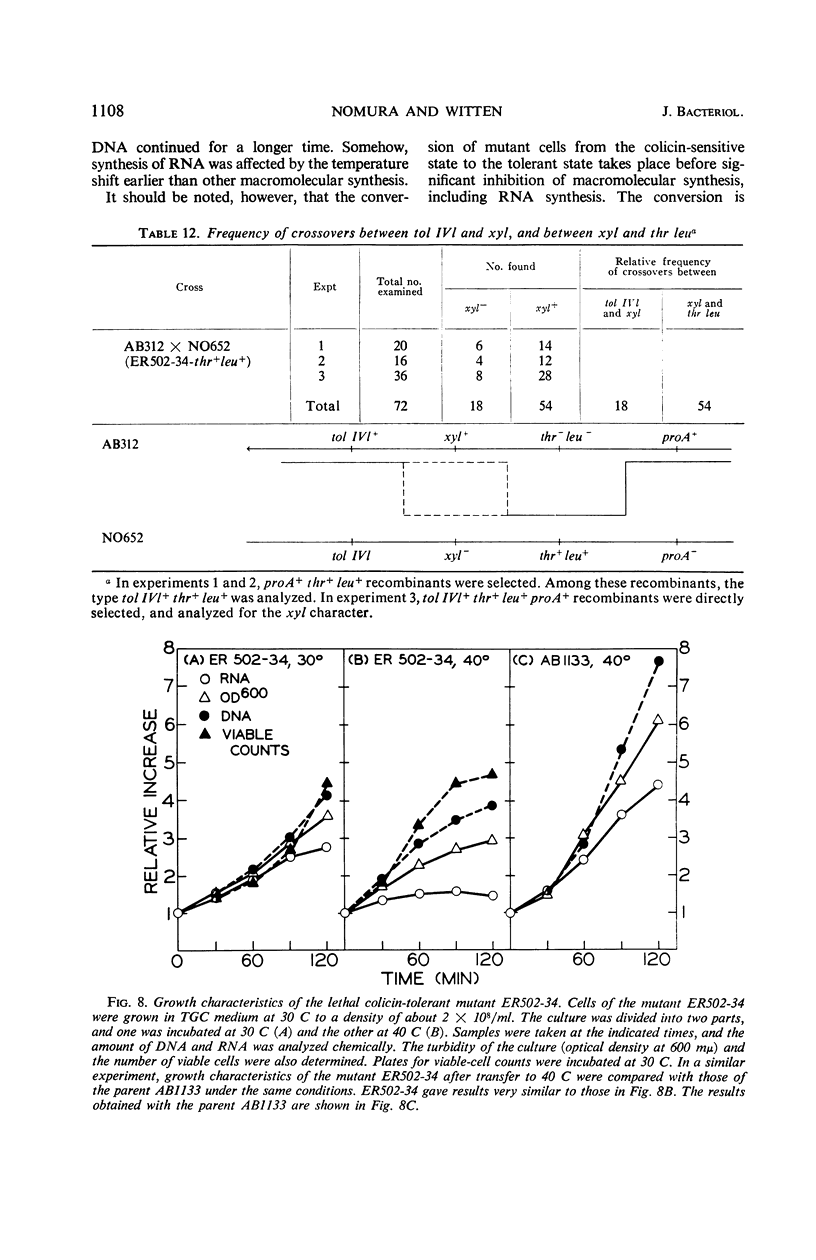
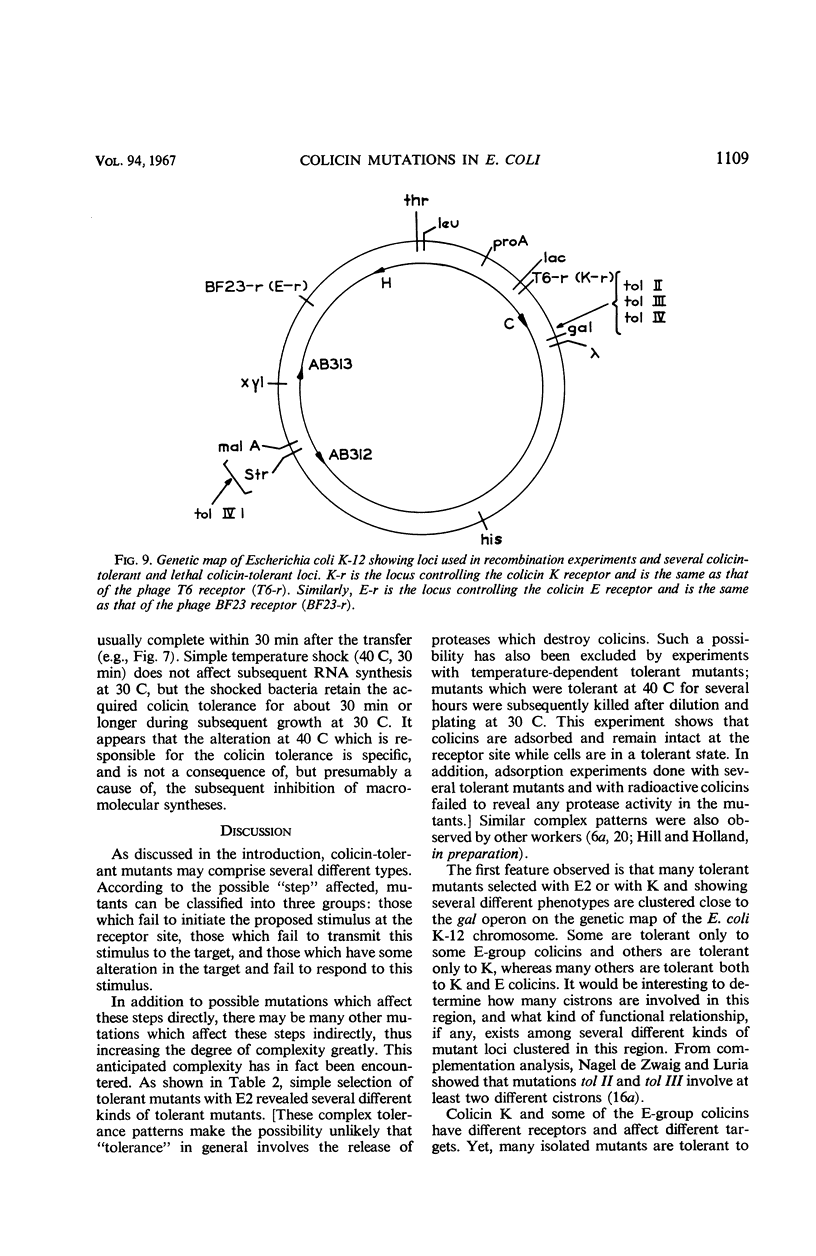
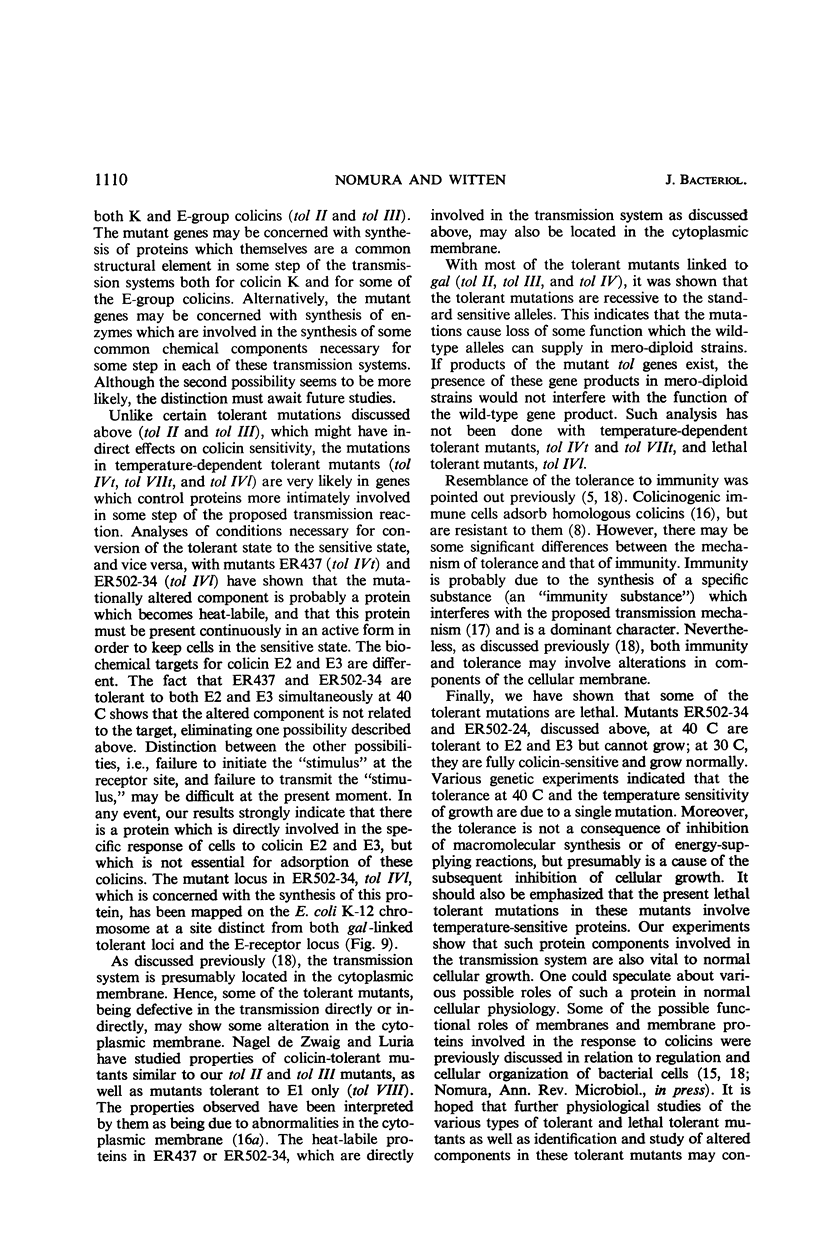
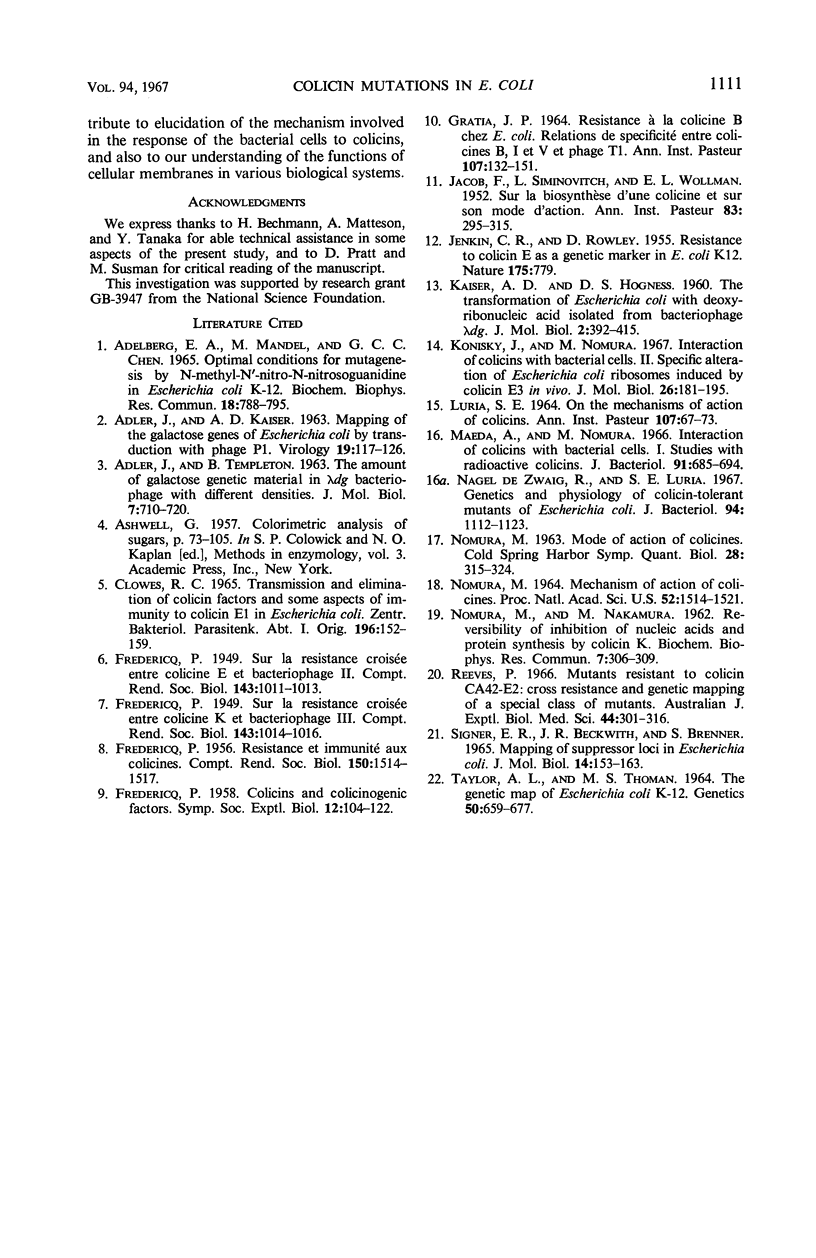
Selected References
These references are in PubMed. This may not be the complete list of references from this article.
- ADLER J., KAISER A. D. Mapping of the galactose genes of Escherichia coli by transduction with phage P1. Virology. 1963 Feb;19:117–126. doi: 10.1016/0042-6822(63)90001-1. [DOI] [PubMed] [Google Scholar]
- ADLER J., TEMPLETON B. THE AMOUNT OF GALACTOSE GENETIC MATERIAL IN LAMBDA-DG BACTERIOPHAGE WITH DIFFERENT DENSITIES. J Mol Biol. 1963 Dec;7:710–720. doi: 10.1016/s0022-2836(63)80118-7. [DOI] [PubMed] [Google Scholar]
- FREDERICQ P. Colicins and colicinogenic factors. Symp Soc Exp Biol. 1958;12:104–122. [PubMed] [Google Scholar]
- FREDERICQ P. Résistance et immunité aux colicines. C R Seances Soc Biol Fil. 1956;150(7):1514–1517. [PubMed] [Google Scholar]
- GRATIA J. P. R'ESISTANCE 'A LA COLICINE B CHEZ E. COLI. RELATIONS DE SP'ECIFICIT'E ENTRE COLICINES B, I ET V ET PHAGE T-4. ETUDE G'EN'ETIQUE. Ann Inst Pasteur (Paris) 1964 Nov;107:SUPPL–SUPPL:151. [PubMed] [Google Scholar]
- JACOB F., SIMINOVITCH L., WOLLMAN E. Sur la biosynthèse d'une colicine et sur son mode d'action. Ann Inst Pasteur (Paris) 1952 Sep;83(3):295–315. [PubMed] [Google Scholar]
- JENKIN C. R., ROWLEY D. Resistance to colicin E as a genetic marker in E. coli K12. Nature. 1955 Apr 30;175(4461):779–779. doi: 10.1038/175779a0. [DOI] [PubMed] [Google Scholar]
- KAISER A. D., HOGNESS D. S. The transformation of Escherichia coli with deoxyribonucleic acid isolated from bacteriophage lambda-dg. J Mol Biol. 1960 Dec;2:392–415. doi: 10.1016/s0022-2836(60)80050-2. [DOI] [PubMed] [Google Scholar]
- Konisky J., Nomura M. Interaction of colicins with bacterial cells. II. Specific alteration of Escherichia coli ribosomes induced by colicin E3 in vivo. J Mol Biol. 1967 Jun 14;26(2):181–195. doi: 10.1016/0022-2836(67)90290-2. [DOI] [PubMed] [Google Scholar]
- LURIA S. E. ON THE MECHANISMS OF ACTION OF COLICINS. Ann Inst Pasteur (Paris) 1964 Nov;107:SUPPL–SUPPL:73. [PubMed] [Google Scholar]
- Maeda A., Nomura M. Interaction of colicins with bacterial cells. I. Studies with radioactive colicins. J Bacteriol. 1966 Feb;91(2):685–694. doi: 10.1128/jb.91.2.685-694.1966. [DOI] [PMC free article] [PubMed] [Google Scholar]
- NOMURA M. MECHANISM OF ACTION OF COLICINES. Proc Natl Acad Sci U S A. 1964 Dec;52:1514–1521. doi: 10.1073/pnas.52.6.1514. [DOI] [PMC free article] [PubMed] [Google Scholar]
- NOMURA M., NAKAMURA M. Reversibility of inhibition of nucleic acids and protein synthesis by colicin K. Biochem Biophys Res Commun. 1962 May 4;7:306–309. doi: 10.1016/0006-291x(62)90196-1. [DOI] [PubMed] [Google Scholar]
- Nagel de Zwaig R., Luria S. E. Genetics and physiology of colicin-tolerant mutants of Escherichia coli. J Bacteriol. 1967 Oct;94(4):1112–1123. doi: 10.1128/jb.94.4.1112-1123.1967. [DOI] [PMC free article] [PubMed] [Google Scholar]
- Reeves P. Mutants resistant to colicin CA42-E2: cross resistance and genetic mapping of a special class of mutants. Aust J Exp Biol Med Sci. 1966 Jun;44(3):301–315. doi: 10.1038/icb.1966.29. [DOI] [PubMed] [Google Scholar]
- Signer E. R., Beckwith J. R., Brenner S. Mapping of suppressor loci in Escherichia coli. J Mol Biol. 1965 Nov;14(1):153–166. doi: 10.1016/s0022-2836(65)80237-6. [DOI] [PubMed] [Google Scholar]
- TAYLOR A. L., THOMAN M. S. THE GENETIC MAP OF ESCHERICHIA COLI K-12. Genetics. 1964 Oct;50:659–677. doi: 10.1093/genetics/50.4.659. [DOI] [PMC free article] [PubMed] [Google Scholar]


